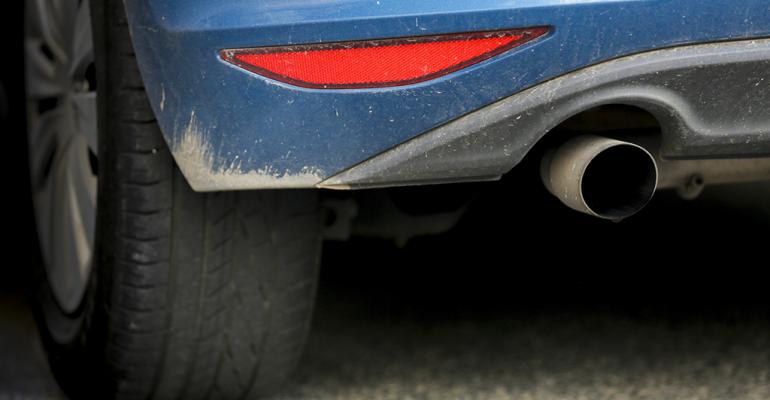BRUSSELS – The European Union moves closer to adopting regulations that in September 2018 would introduce new emissions tests to measure emissions under actual road-driving conditions.
The decision is the third in a series of technical test models approved by the EU, as it mandates how automakers move away from relying on laboratory tests of emissions, which sometimes do not reflect how much pollution is emitted from tailpipes on roads.
The vote on this package of regulations, also known as real driving emissions (RDE), was passed on a 23-3 vote at a Dec. 20 meeting of the Technical Committee on Motor Vehicles. The committee is part of the European Commission, the EU’s executive branch, where national experts meet and vote on technical measures. Only the Czech Republic, Hungary and Romania voted against the regulation, with Slovakia abstaining.
Member states also backed proposed rules that are unpopular with the EU’s automotive industry, such as mandating manufacturers to clearly state the cars’ real-world-emissions performance in their conformity certificate, making the test results transparent and publicly available.
The vote further approved changes to new nitrogen-oxides-emissions tests for diesel engines to make them more representative of real-world driving, notably “taking into account that short city trips starting with a cold engine account for most city pollution,” an EC spokesperson tells WardsAuto.
The development of these tests has been welcomed by environmentalists, who oppose the customary reliance on lab tests to measure emissions levels against technical standards. But they also criticize the committee’s decision to allow automakers to exceed emissions limits by a “conformity factor” (margin of error) of 50%.
This will mean new cars, for example, can emit particulate levels of 900 billion per cu.-ft. (25.5 trillion L) in road tests instead of 600 billion (17 trillion L), effectively allowing automakers to sell cars that exceed EU pollution guidelines, with this tolerance gradually being phased out into the 2020s.
“The Commission’s view is that the portable-emissions-measurement-system devices used in the tests have a bigger measurement error on the road compared to different devices used in laboratories,” says Florent Grelier, clean-vehicles engineer for Transport & Environment, a European group advocating sustainable transport.
The EC spokesperson says the European Parliament, the EU’s directly elected legislative body, and the EU Council of Ministers representing member states, now have a 3-month scrutiny period during which they can accept or block the proposals.
T&E’s clean-vehicles manager Julia Poliscanova says because neither the implementation date nor the conformity factor has been changed, the regulation would be adopted without objection from the parliament.
But in welcoming the Dec. 20 decision by the EC motor vehicles panel, Poliscanova says it will ensure gasoline-powered cars are “fitted with filters to trap the tiny, harmful particles emitted in the exhaust.
“All you need is a gasoline particulate filter costing €25 ($26) per car,” she says in criticizing EU automakers for trying to delay implementing the proposal until at least September 2019, which she argues would risk public health “just to save money.”
But ACEA, the European automobile manufacturers’ group, argues using gasoline particulate filters in direct-injection gasoline engines “will likely require a complete redesign of the exhaust system and surrounding bodywork and/or components.”
In a statement released after the EC panel’s meeting, it said the package’s implementation timetable provides “virtually no industrial lead-time.”
“Manufacturers will have to determine if the limited time to confirm or change vehicle designs will have an impact on model production plans,” an ACEA spokesperson tells WardsAuto.
“EU regulators must follow a proper regulatory procedure that considers the cost-benefits of new measures and provides industry with lead-time in proportion to the severity of new legislation,” the spokesperson contends. Since the EU’s Euro 5 pollution standards took effect in 2009, the Euro 5 and successor Euro 6 emissions regulations “will have had 58 permutations in the space of just seven years,” the spokeswoman notes.
The day before the Technical Committee on Motor Vehicles vote, the parliament’s Committee of Inquiry into Emission Measurements in the Automotive Sector supported a draft report urging the EC to tighten controls on how cars are approved for sale in Europe.
It argues the new on-road tests would reduce, but not end, use of the “defeat” devices producing false pollution measurements that are at the heart of the Volkswagen Dieselgate scandal.
The technical committee plans four more hearings with the Italian and Slovakian ministers in charge of enforcing type approval – the regulatory, technical and safety requirements that must be met for a new car to be sold in a particular country. Representatives of Audi and Opel also will attend. The draft report will be put to a committee vote Feb. 28 and a vote by the full parliament is expected in April.
– with Keith Nuthall in London





